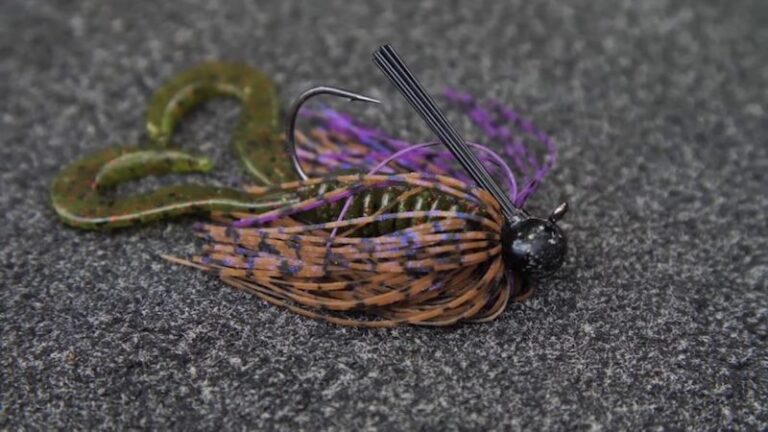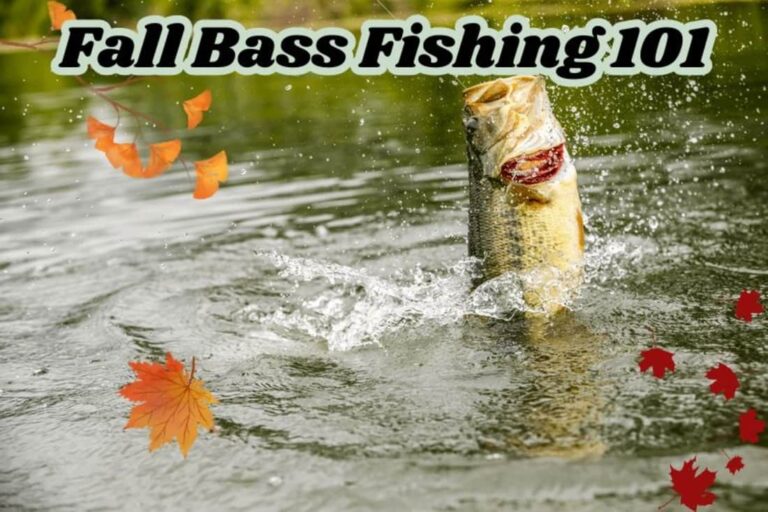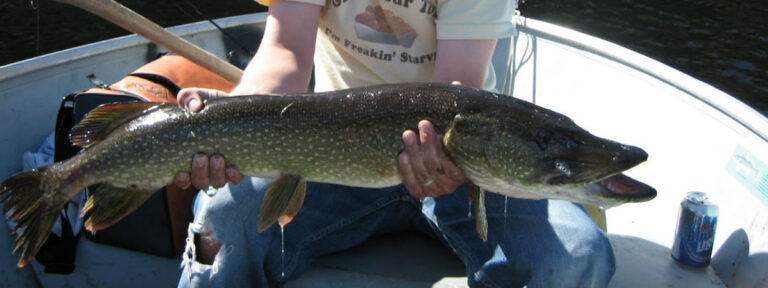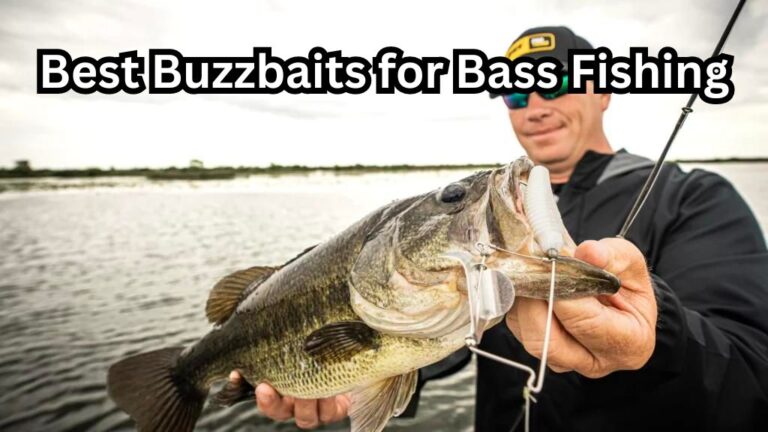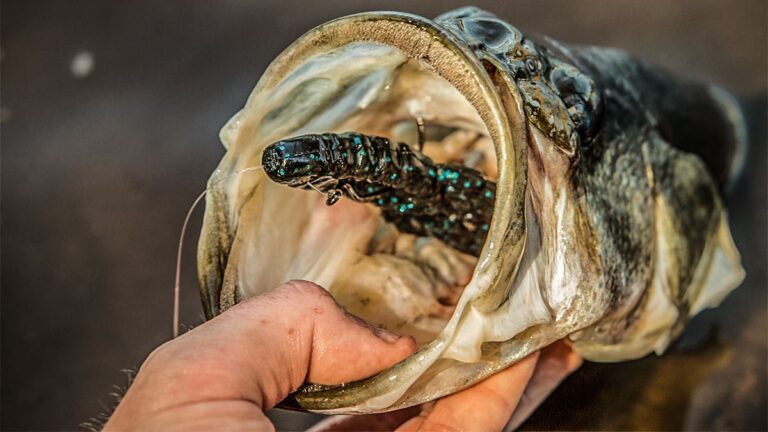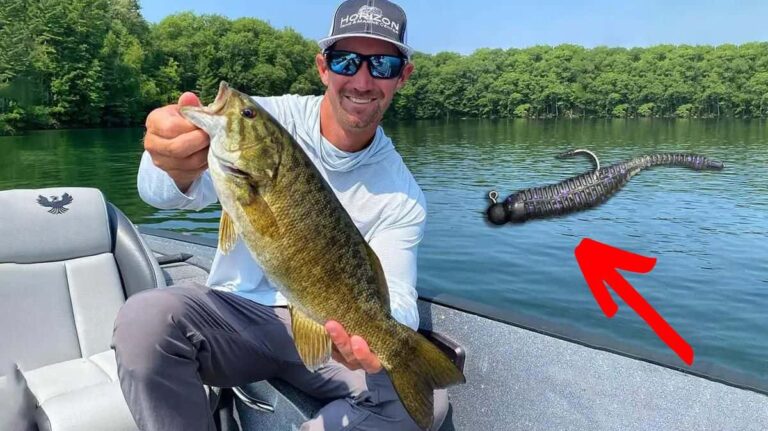5 Best Lures for Smallmouth Bass: Guide to Catching More Bronzebacks
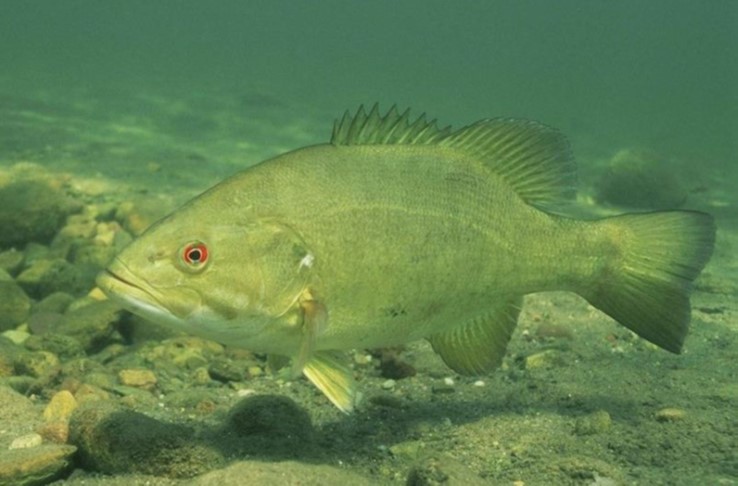
If you’ve ever gone toe-to-fin with smallmouth bass, you know the thrill is real. But to land those beauties, you need the perfect lure.
Fear not! In this article, we’ll reveal the best lures for smallmouth bass, along with tips to boost your angling game.
Get ready for epic catches and fishing tales that’ll have everyone hooked! Let’s dive in!
5 Best Lures for Smallmouth Bass
5. Crankbaits
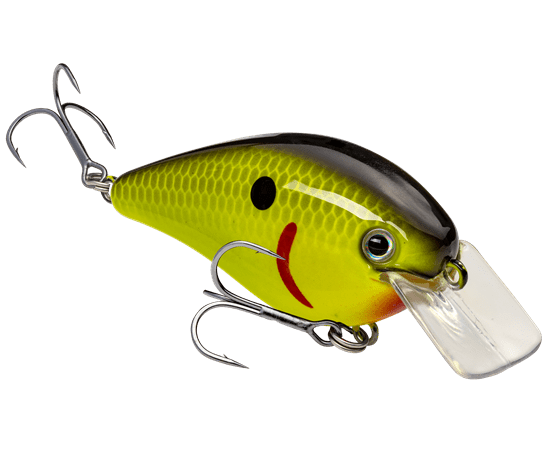
When it comes to enticing smallmouth bass to strike, crankbaits are a tried-and-true favorite among anglers. These versatile lures mimic the movements of baitfish and can trigger aggressive reactions from even the most selective bass. Let’s dive into the world of crankbaits for smallmouth bass and discover why they’re an essential tool in your fishing arsenal.
- Types of Crankbaits
Crankbaits come in various shapes, sizes, and diving depths, each tailored to different fishing conditions. Shallow-running crankbaits are perfect for targeting bass in the shallows, while medium and deep-diving crankbaits allow you to explore the depths where larger bass might be lurking. Additionally, lipless crankbaits, which sink and vibrate, can be excellent choices in areas with dense vegetation.
- Best Colors and Sizes
Smallmouth bass are known to be selective, so having a diverse selection of crankbait colors is essential. Stick to natural colors like shad, perch, and crawfish patterns in clear waters, and experiment with brighter hues like chartreuse and firetiger in murkier conditions. As for size, opt for crankbaits around 2 to 4 inches for imitating smaller baitfish and insects that smallmouth bass typically prey upon.
- Crankbait Fishing Techniques
One of the keys to successful crankbait fishing is understanding the right retrieval techniques. Vary your retrieval speed to see what entices the bass most. A steady retrieve can mimic a healthy swimming baitfish, while a stop-and-go retrieve can simulate a wounded prey, triggering predatory instincts. If you encounter underwater structures like rocks or logs, try the “bump and pause” method to mimic a baitfish that is startled and seeking refuge.
4. Jigs

Jigs are a time-tested favorite among anglers. These versatile lures excel at imitating crayfish, one of the smallmouth bass’s favorite meals, making them a go-to option for targeting these feisty bronze warriors. Let’s delve into the world of jigs for smallmouth bass and discover why they are a must-have in your fishing tackle collection.
Jigs come in a variety of styles, with each designed to suit different fishing scenarios. Football jigs are perfect for dragging along rocky bottoms, mimicking a crayfish moving across the terrain. On the other hand, finesse jigs are ideal for more subtle presentations in clear waters or when smallmouth bass are in a finicky mood. Additionally, flipping jigs, with their streamlined profiles and weed guards, are excellent for fishing around heavy cover.
- Effective Jig Colors and Sizes
When selecting jig colors for smallmouth bass, it’s best to stick with natural tones that imitate crayfish and other bottom-dwelling prey. Shades of brown, green pumpkin, and black/blue are popular choices. Pay attention to water clarity; in clear waters, opt for more realistic colors, while in murky conditions, brighter colors can improve visibility.
As for jig sizes, consider using smaller jigs in the 1/4 to 3/8 ounce range when imitating smaller crayfish or during colder months when the bass are less active. For warmer seasons or when targeting larger bass, you can go up to 1/2 or 3/4 ounce jigs.
- Jig Fishing Tactics
One of the keys to successful jig fishing is presenting the lure in a lifelike manner. Allow the jig to sink to the bottom and then retrieve it with subtle hops or short dragging motions, imitating the movements of a crayfish. Smallmouth bass often take jigs when they fall back to the bottom, so be alert for any sudden changes in resistance.
Focus on fishing around rocky structures, submerged rocks, and underwater ledges, as these are prime areas where crayfish thrive and smallmouth bass frequently hunt for prey. Patience is key with jig fishing, as the slow, methodical approach often yields rewarding results.
3. Poppers
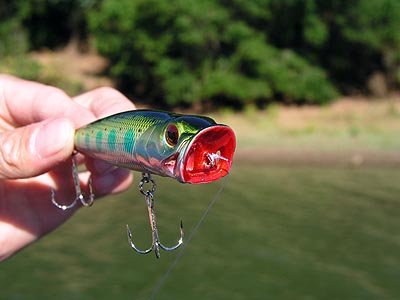
These enticing surface baits create a commotion that draws smallmouth bass from the depths to the surface, making for heart-pounding moments and unforgettable fishing experiences. Let’s dive into the world of poppers for smallmouth bass and discover why they are a must-have addition to your tackle box.
- Popper Design and Action
Poppers are characterized by their cupped face, which creates a splash and a “popping” sound when twitched or retrieved. This commotion mimics a struggling or injured prey on the water’s surface, triggering smallmouth bass to strike with ferocity. Some poppers have a chugging action, producing a series of loud splashes, while others offer a subtler “walking the dog” action, creating a side-to-side movement that drives bass wild.
- Best Popper Colors and Sizes
Smallmouth bass can be enticed by a variety of popper colors, but it’s best to stick with patterns that resemble natural prey, such as frogs or small baitfish. Green, black, and white are popular choices, and a bit of chartreuse can add extra visibility in murkier waters. As for size, opt for poppers in the 2 to 3-inch range for imitating smaller prey and appealing to smallmouth bass feeding on insects near the surface.
- Topwater Tactics
Fishing with poppers is all about creating excitement on the water’s surface. When casting your popper, aim for areas with submerged rocks, weed beds, or near the shoreline where smallmouth bass are known to hang out. Once your popper lands, let it sit for a moment to create ripples and draw attention.
To impart action, twitch your rod tip to make the popper splash and chug. Experiment with the rhythm and intensity of your twitches to find the cadence that drives the bass into a feeding frenzy. Be patient, as sometimes the bass might follow the popper before committing to the strike. When you see the water explode and feel the line tighten, get ready for the adrenaline rush of a topwater strike!
2. Spinnerbaits
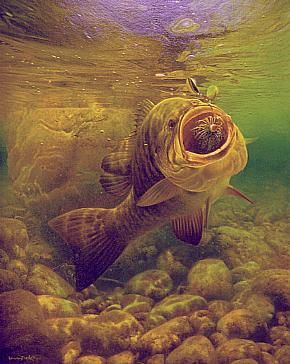
These versatile lures combine flash and vibration to imitate baitfish, making them irresistible to these feisty bronze fighters. Let’s dive into the world of spinnerbaits for smallmouth bass and explore why they are a go-to choice for any angler looking to reel in some trophy-worthy catches.
- Spinnerbait Components and Design
Spinnerbaits are composed of several key components, including a wire frame, a safety pin-shaped arm, one or more spinning metal blades, a skirt made of silicone or rubber, and a sharp hook. The spinning blades generate vibrations and flash as they rotate, mimicking the movements of a school of baitfish and catching the attention of nearby smallmouth bass.
- Best Spinnerbait Colors and Sizes
When it comes to selecting spinnerbait colors for smallmouth bass, stick to natural tones that imitate baitfish like shad or perch. Shades of silver, white, and chartreuse often work well in clear water, while darker colors like black and blue can be effective in murkier conditions. As for size, opt for spinnerbaits in the 1/4 to 3/8 ounce range for general use, and consider going up to 1/2 ounce in windy conditions or when you need to cast over longer distances.
- Effective Spinnerbait Presentations
Spinnerbaits are highly versatile and can be fished in various ways to trigger smallmouth bass strikes. A steady, medium-paced retrieve is a good starting point, as it imitates a baitfish swimming naturally. However, don’t be afraid to experiment with different retrieval speeds and variations to see what entices the bass on any given day.
Try adding occasional pauses or twitches to your retrieve, as this can mimic a wounded or injured baitfish, which can provoke a predatory response from smallmouth bass. Spinnerbaits are also effective when fished around submerged structures, rocks, or weed beds, where smallmouth bass often hide and ambush their prey.
1. Soft Plastics
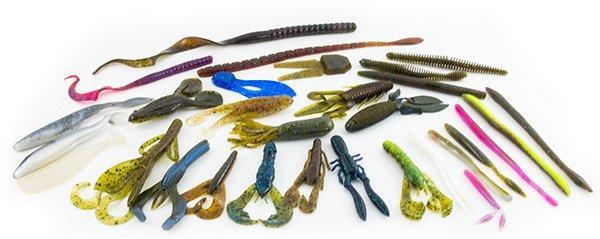
- Types of Soft Plastics for Smallmouth Bass
Soft plastics come in a wide range of shapes and styles, each designed to replicate different types of forage. Worms, grubs, creature baits, tube baits (yes, tubes can be rigged weedless), and crawfish imitations are all popular choices for smallmouth bass fishing. Worms and grubs are versatile options that work well in various situations, while creature baits and crawfish imitations excel when you want to imitate a more substantial meal.
- Rigging Options for Soft Plastics
The beauty of soft plastics lies in their versatility, as they can be rigged in various ways to suit your fishing style. Texas rigging is a weedless setup, perfect for fishing around cover without getting tangled. Carolina rigging allows for a more extended and natural presentation, making it ideal for searching larger areas. Drop shot rigs offer a finesse approach, perfect for tempting finicky bass in clear waters.
- Retrieval Techniques
The key to effectively fishing with soft plastics lies in presenting them in a lifelike manner. After casting, let the soft plastic sink to the desired depth, and then use a combination of twitches, hops, and pauses to mimic the movements of live prey. Vary your retrieval speed and style until you find what triggers the smallmouth bass to strike. Keep in mind that smallmouth bass might often strike on the fall, so stay alert and ready for any sudden action.
Also Read: The Only 5 Soft Plastic Baits You Need
Best Lures for Each Season
Smallmouth bass behavior and preferences shift with the changing seasons and water conditions, which means selecting the right lures is essential to maximize your fishing success. Let’s explore the top lures for different seasons and conditions, so you can adapt your approach and land those prized smallmouth bass throughout the year.
- Spring:
- Pre-Spawn: As smallmouth bass emerge from their winter lethargy, they become more active and aggressive. Crankbaits, jerkbaits, and spinnerbaits are excellent choices for covering water and enticing strikes.
- Spawn: During the spawn, smallmouth bass protect their nests and can become territorial. Jigs and soft plastics, like creature baits or tubes, are effective in targeting spawning areas without disturbing the nests.
- Summer:
- Warm Water: As the water temperature rises, smallmouth bass seek cooler and deeper waters. Try using deep-diving crankbaits, swimbaits, and drop shot rigs to reach those elusive bass in their summer haunts.
- Low Light: In low-light conditions, topwater lures like poppers and walking baits can entice explosive surface strikes during the early morning or late evening.
- Fall:
- Feeding Frenzy: Fall brings on a feeding frenzy as smallmouth bass bulk up for the approaching winter. Spinnerbaits, lipless crankbaits, and jerkbaits work wonders during this season of aggressive feeding.
- Changing Behavior: As the weather cools, smallmouth bass might become more selective. Finesse lures like Ned rigs and wacky worms can be the ticket to entice bites when the bite gets tough.
- Winter:
- Cold Water: In colder temperatures, smallmouth bass become sluggish and tend to feed less. Slow-moving jigs and finesse plastics, presented with patience, are your best bet for enticing strikes during winter months.
- Ice Fishing: When ice fishing, jigs tipped with soft plastics or live bait, like minnows, are popular choices for targeting smallmouth bass beneath the frozen surface.
Water Conditions
Murky Water:
Visibility is reduced in murky waters, making bright-colored lures, such as chartreuse or firetiger, more effective. Spinnerbaits, crankbaits, and vibrating jigs can draw attention in these conditions.
Clear Water:
In clear waters, smallmouth bass can be more cautious and selective. Opt for more natural-looking lures like soft plastics in natural colors, finesse jigs, and realistic crankbaits.
Additional Tips for Smallmouth Bass Fishing
Fishing for smallmouth bass can be a thrilling and rewarding experience, but it also requires finesse and a few tricks up your sleeve. Here are some additional tips to enhance your smallmouth bass fishing game and increase your chances of landing those bronze-backed beauties.
- Select the Right Fishing Rod and Reel: Choosing the appropriate fishing rod and reel combo can significantly impact your fishing success. Opt for a medium to medium-heavy spinning or baitcasting rod with good sensitivity and enough backbone to handle the fight of a smallmouth bass. Match it with a reel that has a smooth drag system and line capacity suitable for the conditions you’ll be fishing in.
- Proper Line Selection and Leader Usage: Smallmouth bass can be wary of fishing line, especially in clear waters. Use low-visibility fishing lines like fluorocarbon or monofilament for better stealth. When fishing in areas with sharp rocks or heavy cover, consider using a leader made of abrasion-resistant fluorocarbon or braided line to prevent break-offs.
- Understand Smallmouth Bass Feeding Triggers: Smallmouth bass are opportunistic feeders, and understanding their feeding triggers can give you an edge. Pay attention to factors like water temperature, light conditions, and the presence of baitfish. Additionally, smallmouth bass often feed more actively during low-light periods, so consider fishing during early mornings or late evenings.
- Importance of Stealth and Patience: Smallmouth bass have keen senses, and being stealthy is crucial. Avoid making unnecessary noise, and try to keep a low profile to prevent spooking the fish. When you spot a potential target, exercise patience and make accurate casts to avoid scaring the bass away.
- Experiment and Be Open to Change: Fishing for smallmouth bass can vary significantly depending on location and conditions. Don’t be afraid to experiment with different lures, retrieves, and presentations. Be open to changing your approach if the fish aren’t responding, and don’t hesitate to explore new fishing spots to find where the bass are biting.
- Practice Catch-and-Release: Smallmouth bass are a valuable resource, and practicing catch-and-release is essential for preserving their populations. Handle the fish with care, use proper fishing gear to minimize harm, and release them quickly to ensure their survival.
- Stay Informed and Follow Regulations: Stay informed about fishing regulations and seasons in your area. Respect size and creel limits to help conserve the smallmouth bass population and maintain healthy ecosystems.
By incorporating these additional tips into your smallmouth bass fishing strategy, you’ll not only enhance your angling skills but also contribute to the conservation of this prized species.
Recap
- Smallmouth bass fishing requires selecting the right lures to increase success.
- Understanding smallmouth bass behavior, habitat, and feeding patterns is crucial for lure choice.
- Top lure categories include crankbaits, jigs, soft plastics, topwater lures, and spinnerbaits.
- Crankbaits come in various types and sizes, and their action is essential for mimicking prey.
- Jigs imitate crayfish and can be rigged in different ways for various fishing conditions.
- Poppers create surface commotion, attracting bass with their splashing and chugging action.
- Soft plastics offer versatility, replicating different prey and can be rigged in different styles.
- Best lure choices vary depending on seasons and conditions:
- Spring: Crankbaits, jerkbaits, and jigs during pre-spawn and spawn.
- Summer: Deep-diving crankbaits, swimbaits, and topwater lures in low light.
- Fall: Spinnerbaits, jerkbaits, and finesse lures during feeding frenzies.
- Winter: Slow-moving jigs and finesse plastics for cold water fishing.
- Murky Water: Bright-colored lures like chartreuse and crankbaits to enhance visibility.
- Clear Water: Natural-looking lures such as soft plastics and realistic crankbaits.
- Additional tips include selecting the right fishing rod and reel, using proper line and leader, understanding feeding triggers, practicing stealth and patience, experimenting with different techniques, practicing catch-and-release, and following fishing regulations.
Conclusion
Matching smallmouth’s diet is key when choosing the best lures for smallmouth bass can take your fishing game to new heights. From crankbaits to soft plastics, each lure has its charm and appeal.
Smallmouth bass and Largemouth bass are a bit different, so they require differences in your fishing approach.
Embrace the thrill of the chase, cherish nature’s beauty, and enjoy every moment of your angling adventure.
Happy fishing and tight lines!

